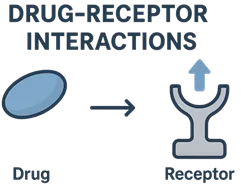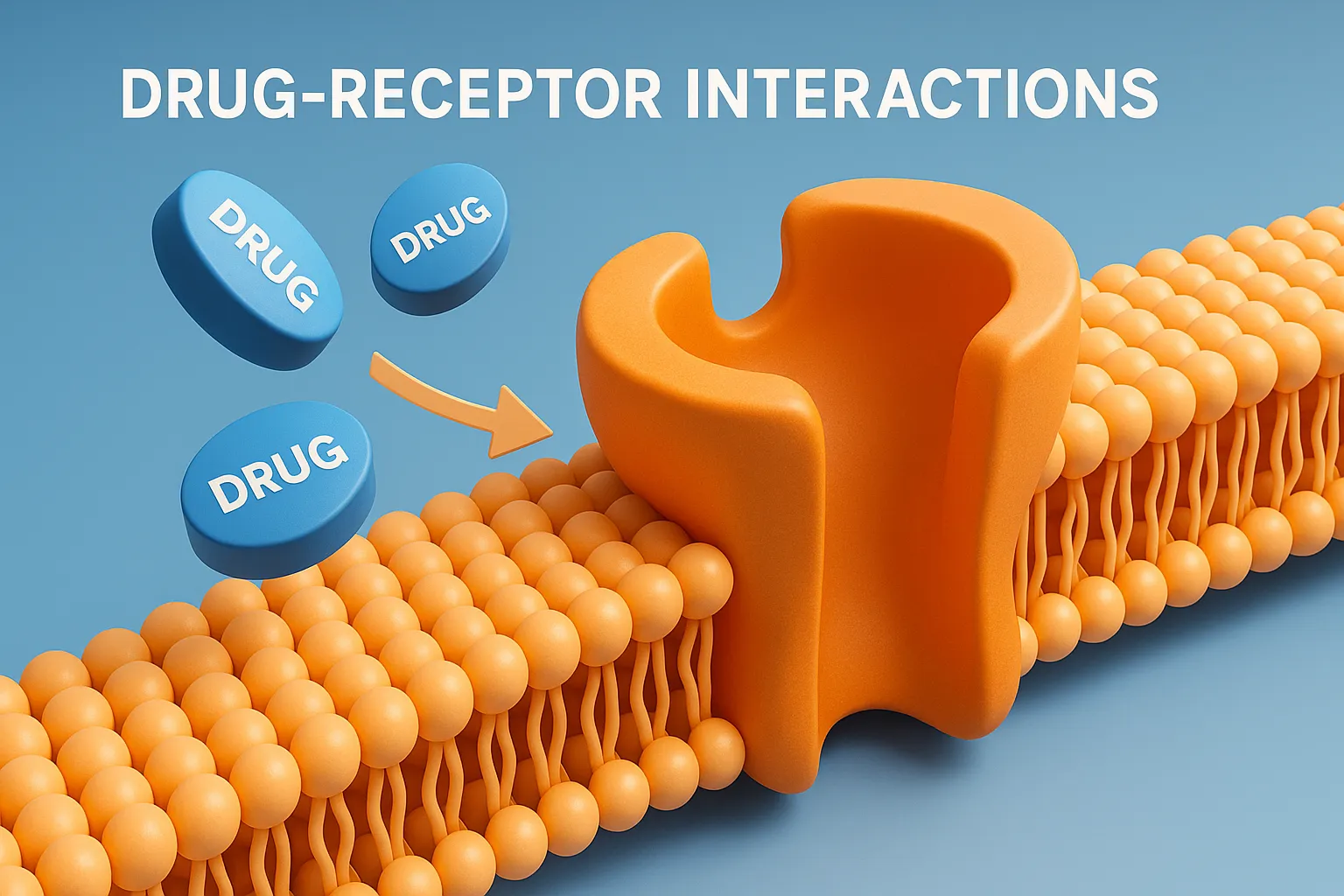Drug-receptor interactions describe how drugs bind to receptors, influencing potency, efficacy, and selectivity.
- Drugs produce their effects mainly by interacting with receptors—specific macromolecules usually found on or within cells.

Key Concepts of Drug-Receptor Interactions:
- Receptor: A protein molecule that receives chemical signals from outside a cell.
- Ligand: A molecule (e.g., drug) that binds to a receptor.
- Affinity: Strength of binding between a drug and its receptor.
- Intrinsic Activity (Efficacy): Ability of a drug to activate the receptor after binding.
Types of Ligands:
- Agonist: Binds and activates the receptor (e.g., adrenaline on β-receptors).
- Antagonist: Binds but does not activate the receptor; blocks it (e.g., propranolol blocks β-receptors).
- Partial Agonist: Binds and partially activates the receptor.
- Inverse Agonist: Binds and reduces receptor activity below the baseline.
Binding Is Reversible or Irreversible:
- Most drugs bind reversibly via weak forces (hydrogen bonding, Van der Waals).
- Some drugs (e.g., phenoxybenzamine) bind irreversibly, forming covalent bonds.

